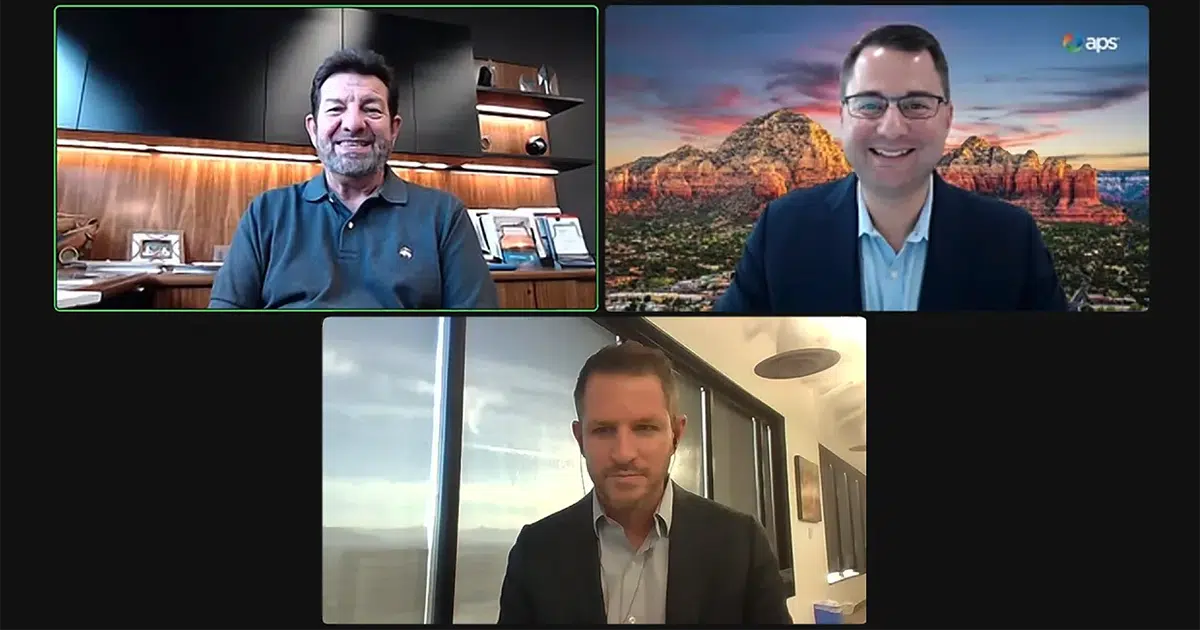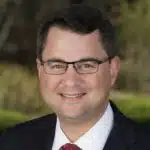

Regional Report: Powering Greater Phoenix’s Future
Published: 12/13/2023
How APS and SRP plan to maintain energy reliability while incorporating more renewables
Arizona and Greater Phoenix have long been accustomed to top-tier energy service. Through the work of major providers like Arizona Public Service (APS) and Salt River Project (SRP), the state is ranked the second-most reliable power grid in the nation, with an average of only three downtime hours annually.
As the region evolves, energy demands will increase due to the growing population and industry output. Local leaders are evaluating the best ways to maintain reliability and build toward a sustainable future.
A panel of experts discussed the balance and strategies at a Regional Report hosted by the Greater Phoenix Economic Council (GPEC):
- Ted Geisler, President, Arizona Public Service
- Jim Pratt, General Manager and CEO, Salt River Project
- Chris Camacho, President & CEO, Greater Phoenix Economic Council
“It really comes down to very good, rigorous long-term planning. You’ve got to recognize in our industry, that’s just huge to us,” Pratt said.
The biggest power need
Geisler said the Arizona electric grid will need to double in size over the next 15 years to maintain its current output due to a variety of factors including mass electrification of vehicles, computing demands like data centers and artificial intelligence, industrial reshoring, and population growth.
“When you think about data demands and manufacturing demands, the Phoenix metropolitan area is a pronounced, attractive region for those industries, and our level growth of data and manufacturing is heightened here compared to elsewhere in the country,” Geisler said. “It’s exciting and we are thrilled to be able to serve a territory that has such attractiveness and such growth, but it means that we are revamping all of our plans to be able to double the size of our grid over the next 15 years.”
It’s not just heavy industrial growth that necessitates a shift in grid capacity. Pratt said healthcare, grocery stores, and school districts all contribute to heightened power requirements. This is a natural step for a region evolving into a national hub on the international stage.
“I feel very fortunate,” Pratt said. “Growth is a whole lot better to manage than contraction.”
Maintaining reliability while building a more sustainable future
Arizona utility companies have studied power and demand management of other states to ensure reliable service and grid management locally. For instance, the deregulated nature of Texas’ system was a massive problem during the deadly storms and power outages of 2021. California’s push toward renewable energy has been overly aggressive and hampers reliability today.
“We’re committed to a plan of decarbonization, but we are doing it in a gradual manner that doesn’t put reliability at risk,” Geisler said.
Both utility companies have set 2050 as the major milestone for carbon reduction, with stepping stones over the next decade. APS plans to be 65% carbon-free by 2030 and 100% carbon-free by 2050 using a blend of technologies with rapidly growing clean energy capabilities like solar, wind, nuclear and hydrogen. SRP will add about 20,000 megawatts of capacity by 2035, 90% of which will be renewable and the remaining 10% from natural gas. By 2050, SRP will have reduced fossil fuel usage by 90% and phased out coal altogether.
The energy portfolios will continue to use energy from the Palo Verde Nuclear Generating Station Plant, the largest clean energy source in the country.
“When companies like SRP and APS set goals like that out in the future, it’s a signal that we’re trying to send to the innovators and the supply side saying we need help to develop some of the new technology to be able to bridge that gap and get to entirely carbon-free,” Geisler said.
Serving industry needs
Companies seeking expansion opportunities research grid stability and note Arizona’s strong ranking relative to competitor states like California and Texas.
“Cost always matters, infrastructure matters, but more recently with cloud and manufacturing investments looking at these respective markets, because of the sheer capital investment levels going up due to machine learning and AI integration, in the evaluation of grid resiliency and pricing, reliability is the number one factor now for advanced industries,” Camacho said.
The federal government may have a role to play, Pratt said. Utility companies in the western United States need to build long, high-voltage transmission across federal lands, which triggers a regulatory and permitting process that can take years. Shortening that process will help accelerate the build-out of power capacity.
It’s a new level of demand that most states have never experienced. APS and SRP work to ensure communication and transparency with companies seeking to expand and scale their business. Geisler said APS provides timelines that may seem longer than other states but are often more realistic, allowing the companies to plan with certainty.
The utility providers also review proposed ramp-up rates of expanding businesses. A company that needs a large quantity of megawatts may not need it all immediately — it may use a gradually increasing amount over multiple years until operations in the region have fully scaled. In communicating and planning together, the providers can build or procure generation to meet the load demand without over-promising and under-delivering.
“Together we’ll be able to plan accordingly, build new infrastructure and connect new demand, but it’s going to have to be done through that partnership and open dialogue,” Geisler said.
Meet the Panel
Ted Geisler
President
Arizona Public Service (APS)
Jim Pratt
General Manager and CEO
Salt River Project
Chris Camacho (Moderator)
President & CEO
Greater Phoenix Economic Council


